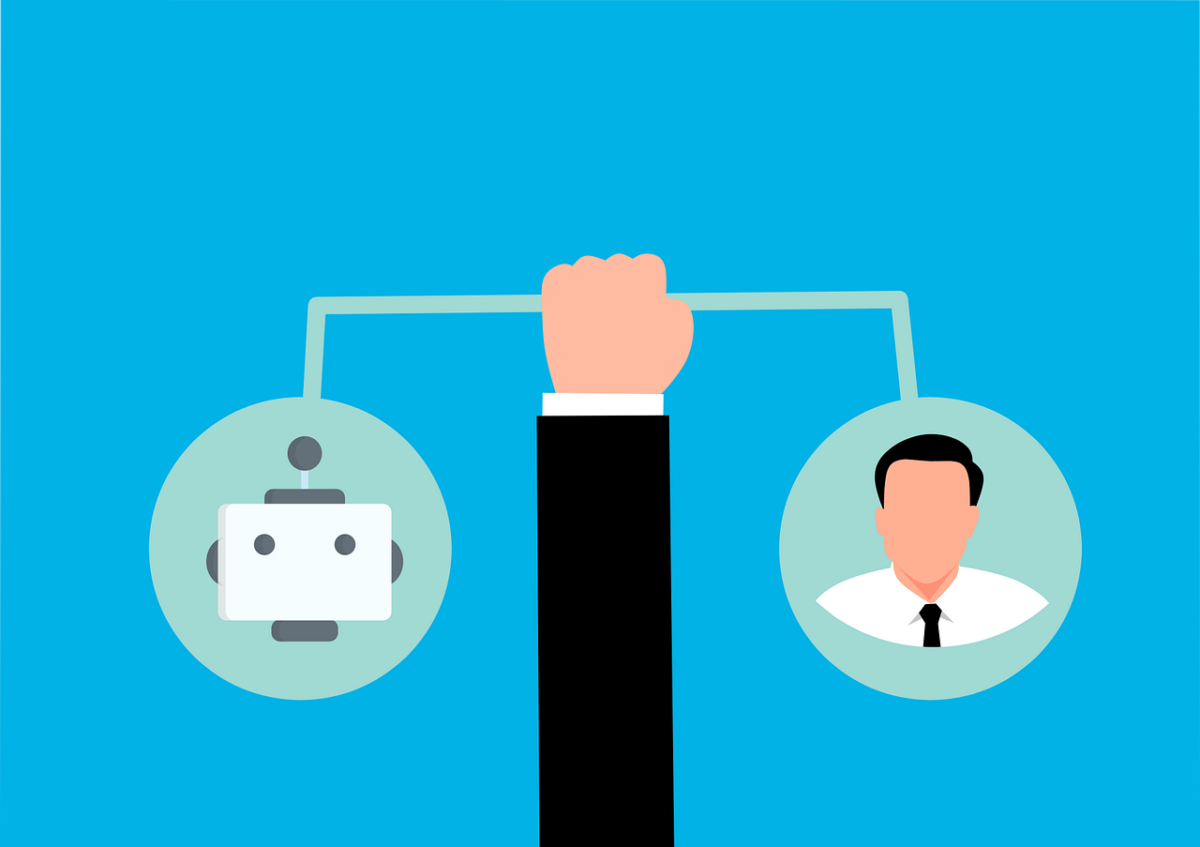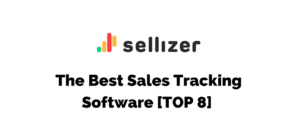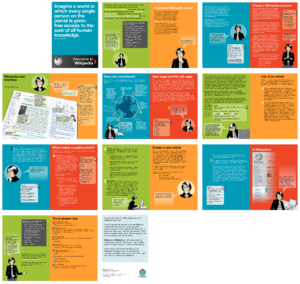Can you rely on your proposal process? Or do you wish that every other task didn’t take so long? If it’s the latter, you can unburden yourself or your salespeople by using automation tools. Then, you’ll be able to spend more time meeting prospects and analyzing your proposals to tweak them over time.
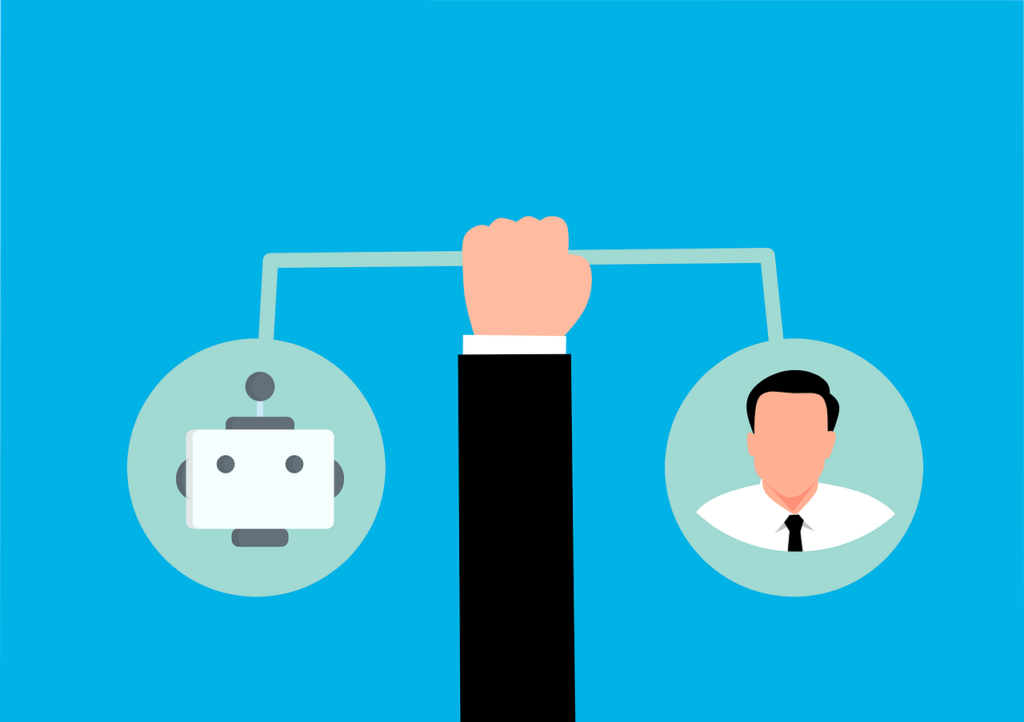
Table of contents
What is a proposal process?
Whenever a company proposes business to a potential customer, client, or partner, they follow certain steps. The steps form a defined proposal process within the organization. For example, a vendor might:
- receive a request for proposal (RFP),
- bring salespeople and subject-matter experts (SMEs) together to decide if the RFP is worth responding to,
- establish a team for the project and define the objective,
- draft the proposal with personalized answers to RFP questions,
- prepare a graphic design for the proposal,
- proofread the final document,
- submit the RFP response.
Thus, they deliver a formally solicited proposal. A RACI matrix helps them assign roles to team members and make sure everything runs like clockwork. However, smaller companies usually have simpler and less rigid proposal processes.
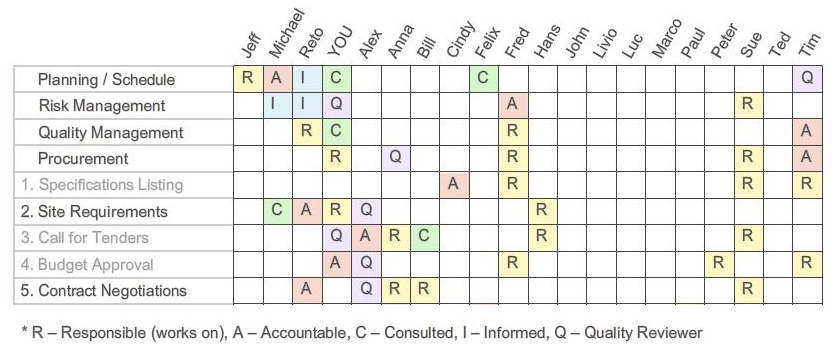
If there are not enough employees to form a team, a single salesperson (or business operations professional) will take on entire projects. Such vendors rely on informally solicited proposals, entailing fewer steps. Instead of responding to an official request, they offer to send a proposal after a conversation with a potential customer.
Of course, the company size is not everything. Your proposal process will also depend on other variables, such as the length of your sales cycle or the extent of a particular purchase. The complexity of research, the number of people involved, and the length of the proposal vary among industries.
When you standardize your process, you’ll be able to break it down into tasks and work towards completing them more efficiently.
Should I automate my proposal process?
Now, you may wonder if it’s possible to automate your proposal workflow without losing quality. After all, it’s crucial to personalize all the documents and communications so your potential customers or partners feel cared for.
However, doing everything from scratch won’t be viable in the long term. Let’s say you have a sales team that sends 30 proposals every month. How many hours will it take to write, deliver, and follow up on them? Even if you win some customers, it’s worth saving a percentage of the time and redirecting it to meetings, outreach, and other sales activities.
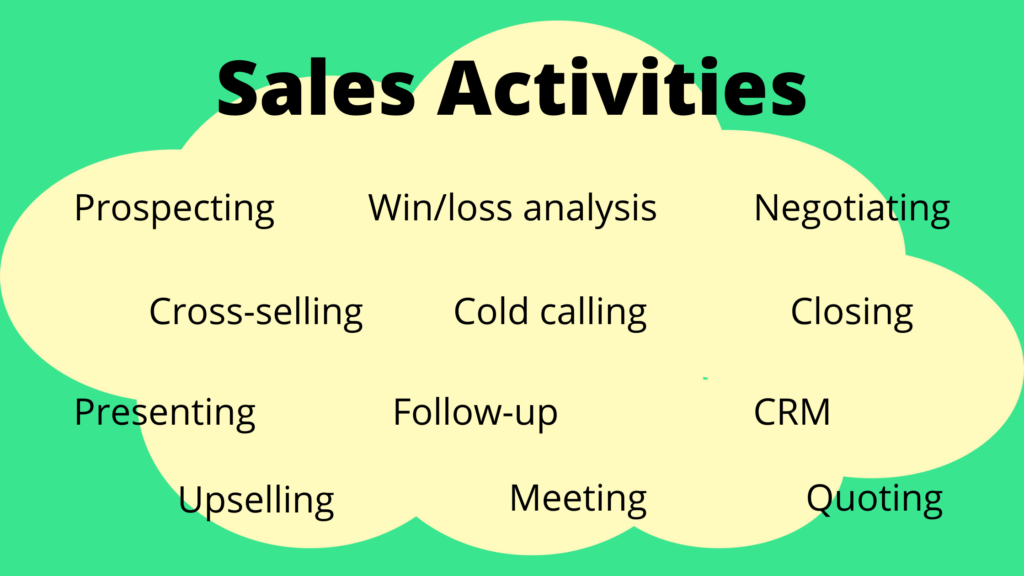
That being said, proposal automation doesn’t mean you leave it all to the computers. On the contrary – it means you have more time and space to connect with people and make your brand feel more human. What you do automate is the tasks that everybody hates:
- copying and pasting information,
- searching for old files,
- writing email after email,
- following up to find out if the recipient even opened the file.
In other words, you can automate anything tedious and repetitive. No matter if you speed up the file creation or just the follow-ups, the result will be a more structured process with less work to do.
What tasks can I automate with proposal management software?
First, you’ll need to choose the right proposal management software for your business. There are dozens of solutions that automate proposals in some way, either in the creation stage or when you’re sending the files, following up on them and analyzing their performance. Here’s a general list of tasks those tools can help you with.
- Proposal creation – drag-and-drop document editors and RFP response libraries come in handy if you write a lot of proposals.
- Proposal sending, scheduling, and mass sending to multiple recipients.
- Saving data in your CRM by integrating your tools.
- Uploading to the cloud – e.g., automatically saving every attachment you send by email.
- Sharing content with other contributors for easy collaboration.
- Follow-up emails – I’ve written a guide on that.
- Requesting a contract or call from the recipient’s side.
- Proposal analytics – tracking what happens to your files so you know what steps to take next.
Sellizer will help you with 7 out of 8 tasks listed above. I’ll explain it in more detail down below. If you prefer to see things for yourself, feel free to do it now!
How to streamline my proposal process with automation?
Automation tools are supposed to make your proposal process faster, not more complicated. Therefore, it’s no use trying to automate tasks that already run efficiently. Identify those that are still manual and consume a lot of time. Then, find proposal management software that will take care of them. Below, you can see examples of what you can do with Sellizer.
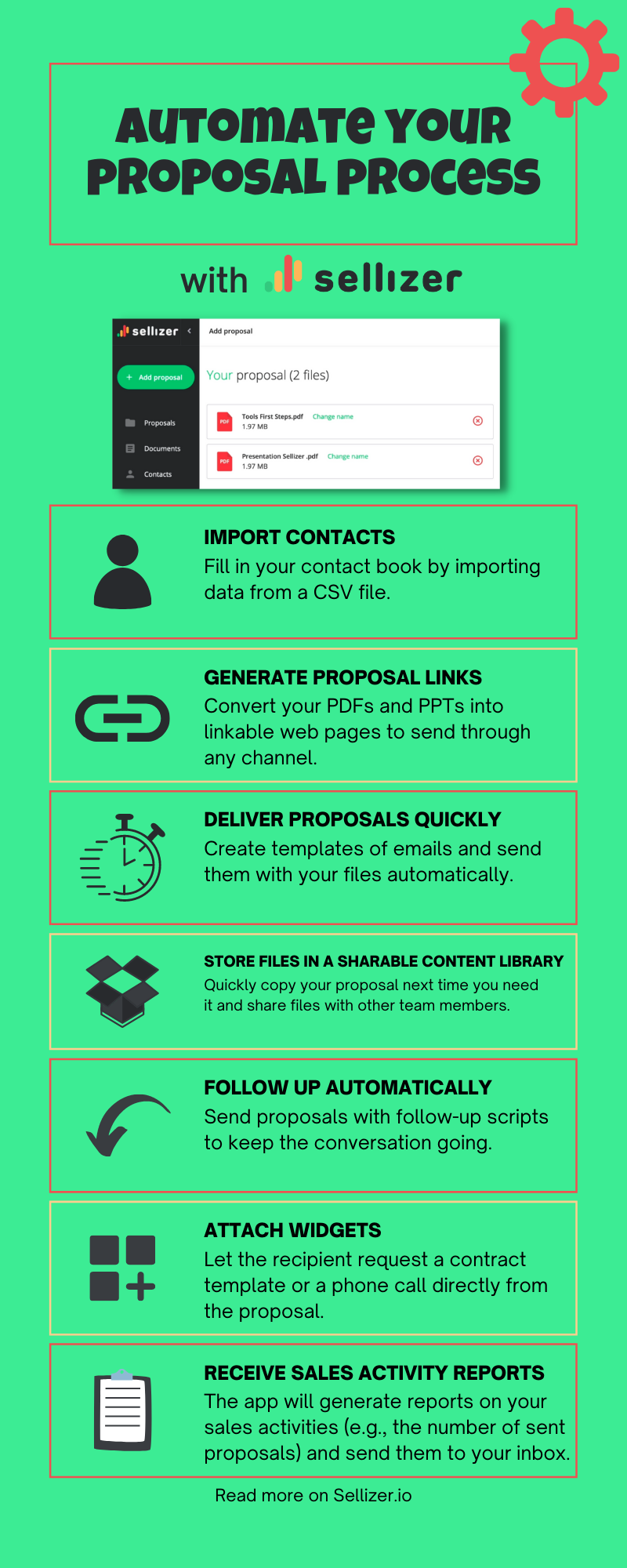
Proposal analytics – what do I need to know?
Saving time is not the only benefit you get from using proposal software. The magic lies in proposal analytics. Well, not actual magic – it’s hard data that will help you transform your business for the better. Knowing when, where, and by whom your proposals are opened and read means you can identify hot opportunities and close more deals in the long run.
So, what kinds of data should you track and analyze? Let me tell you about 5 core proposal analytics – the secret to successful selling.
1. When the proposal is opened
There’s no need to wonder or ask anymore. Good proposal automation tools track file opens. With SMS notifications on, you’ll know right away when the recipient opens your document for the first time.
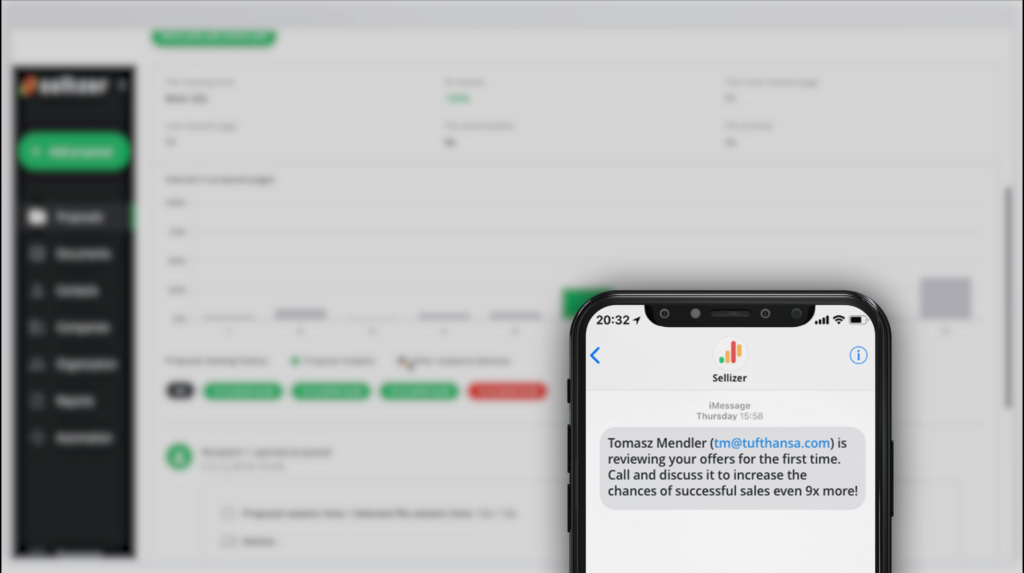
What can you do with this data?
- Contact the prospect while they’re reading your proposal. Answer questions buzzing around their heads, give them more details, or just let them know that you’re here for them whenever they come to a decision.
- Schedule a follow-up email or call if the prospect opens your proposal but doesn’t respond, or when they don’t open the file at all. Time your attempts well and keep the deal in your grasp.
2. Proposal viewing time + attention per page
Have you ever wondered if your proposals are too long, or which parts are the most interesting to the recipients? Find the answers in proposal analytics. Software like Sellizer will show you the viewing time of each file and page.
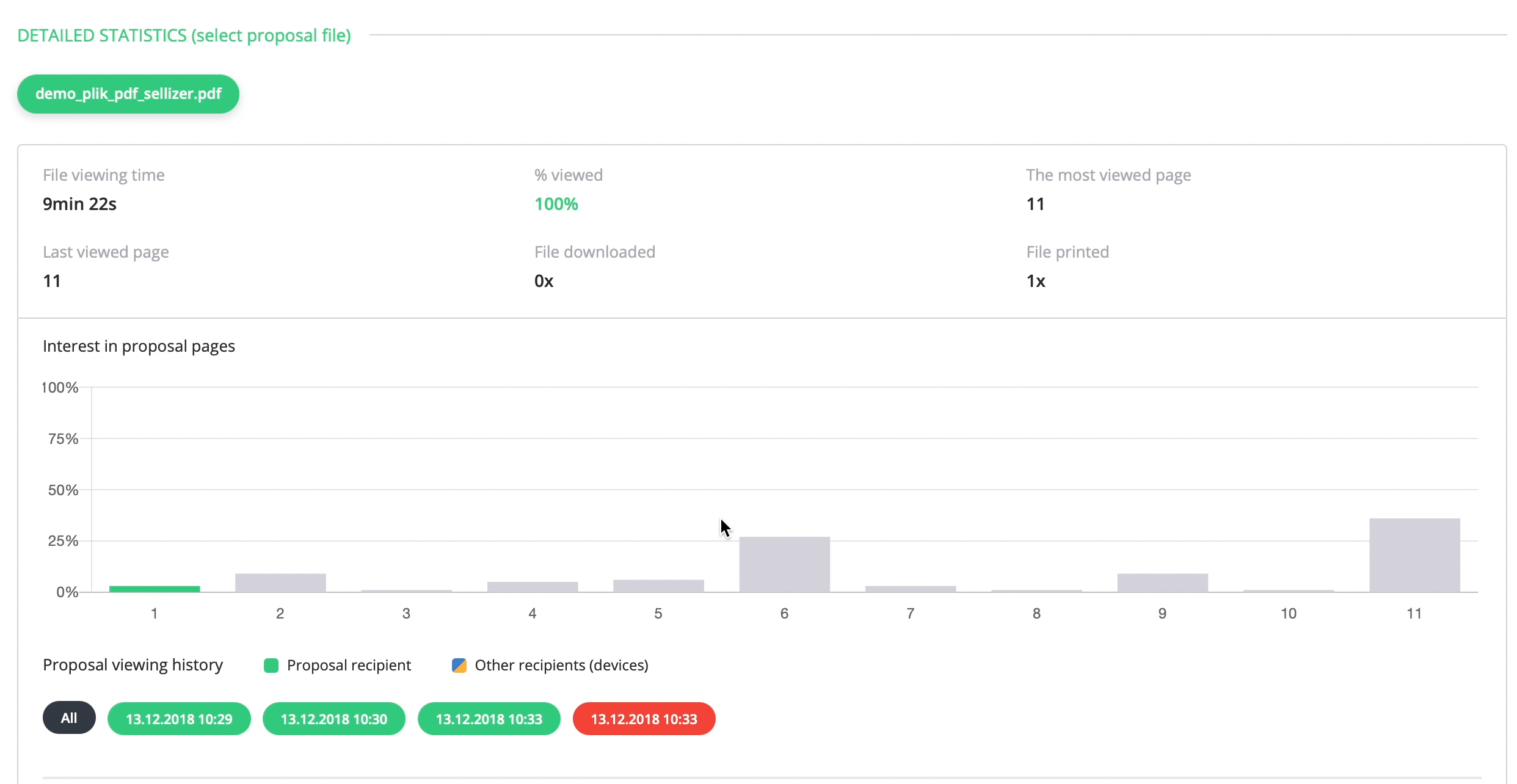
What can you do with this data?
- See what works and what doesn’t work in your proposals. Maybe you spend a lot of time crafting pages that get skipped? Or perhaps you could put more emphasis on the information that prospects often review multiple times? There’s always room for improvement.
- Ask the right questions during your next conversation with the recipient. Their viewing analytics will tell you which points you need to restate or what doubts they may have, which means you can reassure them and build trust easier.
3. Viewing sessions
To understand the first 2 points better, the total viewing time should be divided into sessions. Just the average attention time won’t tell you much. It’s normal for a person to open a file for a moment, then come back later to read it in full. However, if there are 2 or more long sessions, it may suggest that the recipient is comparing the content with other proposals.

What can you do with this data?
Again, it will help you steer further conversation onto the right topics. Has your prospect been looking at the pricing a lot? Explain what’s included in the price so that they see the value they will be getting.
4. Number of downloads and prints
Other pieces of information that give you a glimpse into the recipient’s decision-making process are the numbers of prints and downloads. For example, if your proposal has been printed, it’s likely to be evaluated by multiple people, perhaps during a special meeting.
What can you do with this data?
If you suspect that there are more stakeholders and the proposal process might take a bit longer, you can time your follow-ups better and move the deal forward while still giving the recipient enough space to think.
5. The chances of winning the sale
All of the above information will help you evaluate your chances of winning the sale. Besides, proposal management software like Sellizer will give you an estimate calculated by AI. Combining the recipients’ attention rate with other kinds of data, you’ll know who needs more convincing and who is ready to sign.
What can you do with the data?
No more convincing the convinced or pushing people who need more time to think. Guide each prospect in a smart way to maximize the effectiveness of your proposal process.
Automate proposals to save time and improve your sales process
I gave you all the reasons to automate your proposal process. It’s up to you to decide which tasks overburden you or your salespeople. Leave them to the computers and focus on the activities that matter – nurturing connections and moving leads down the sales funnel.
Interested in proposal management software? Start your free 14-day trial of Sellizer today.



